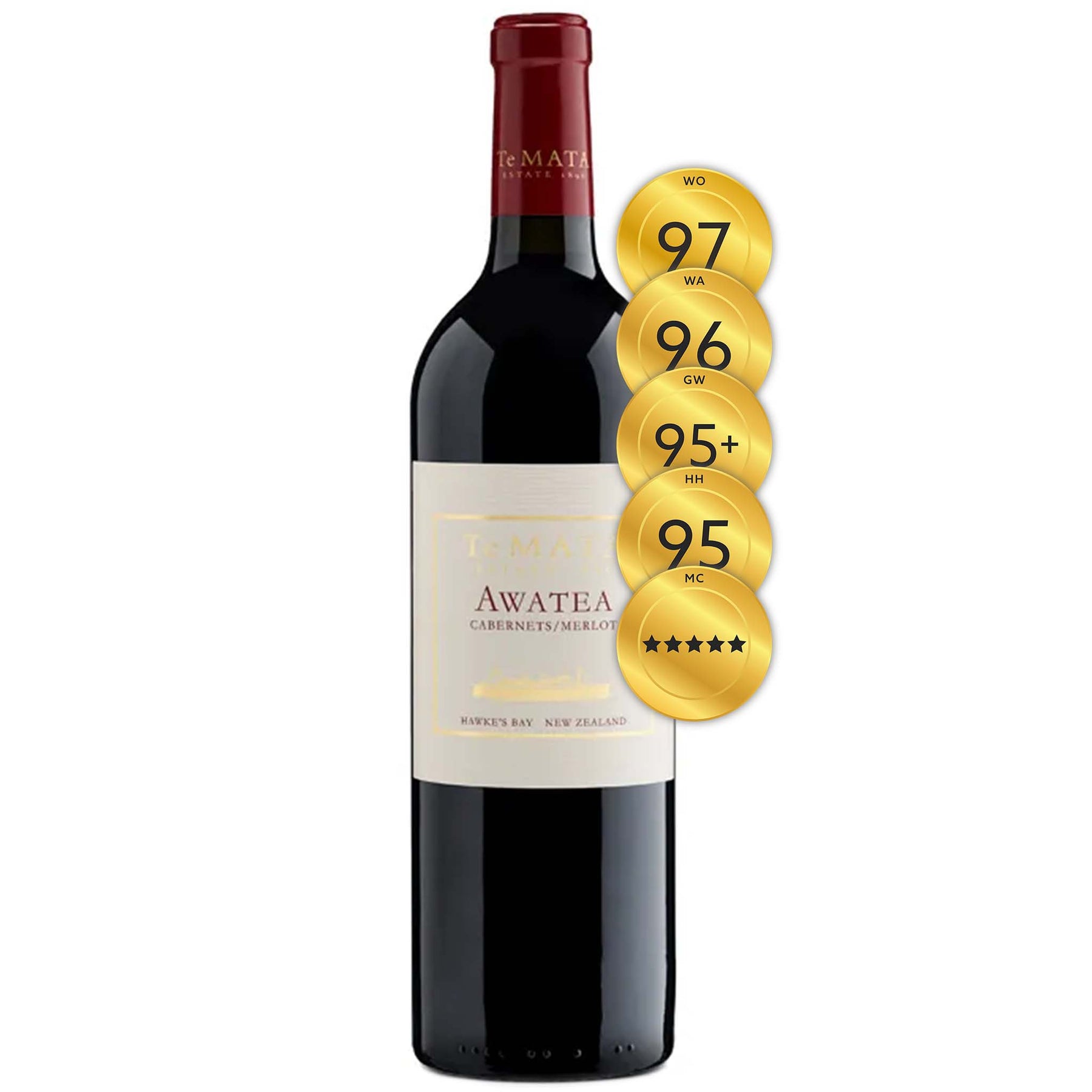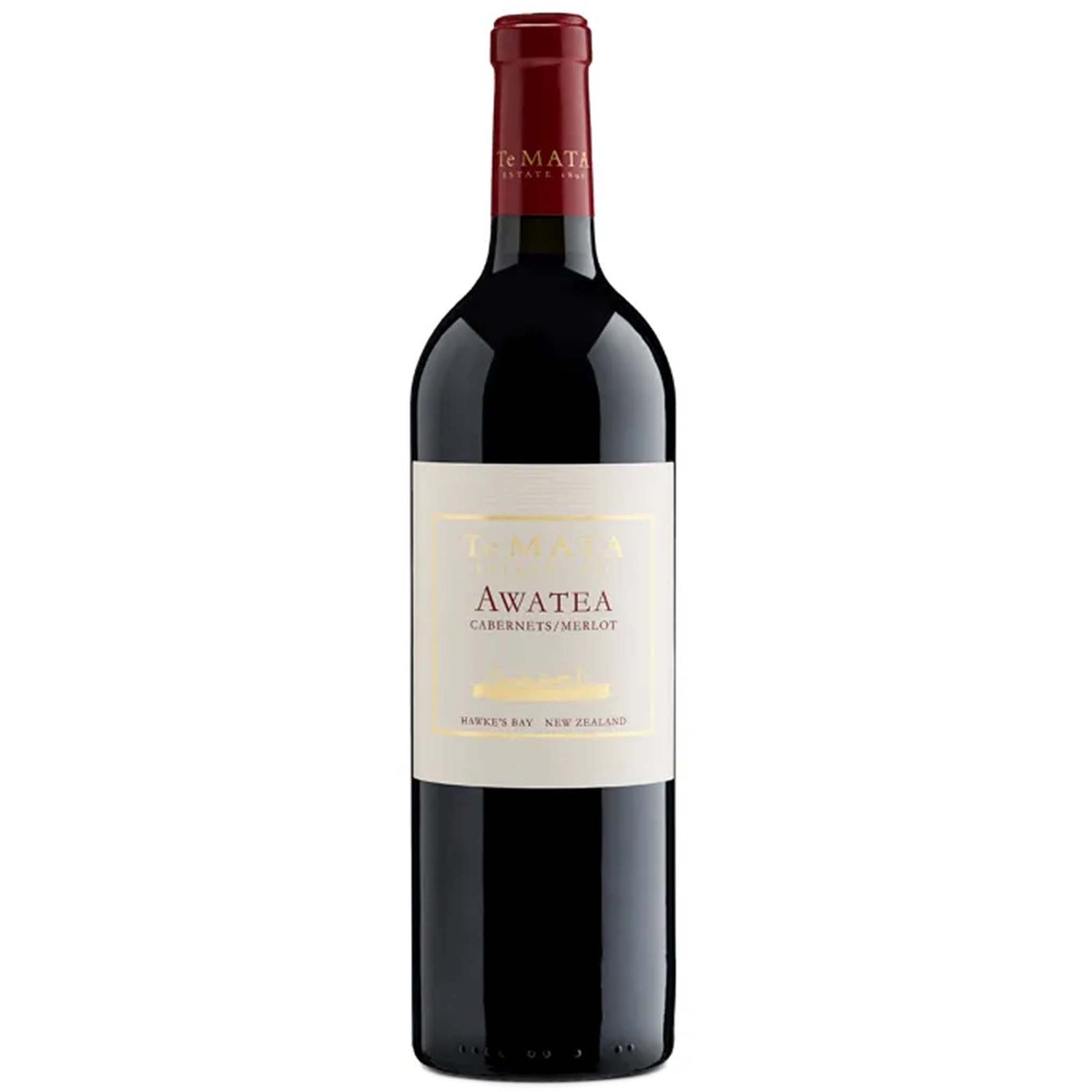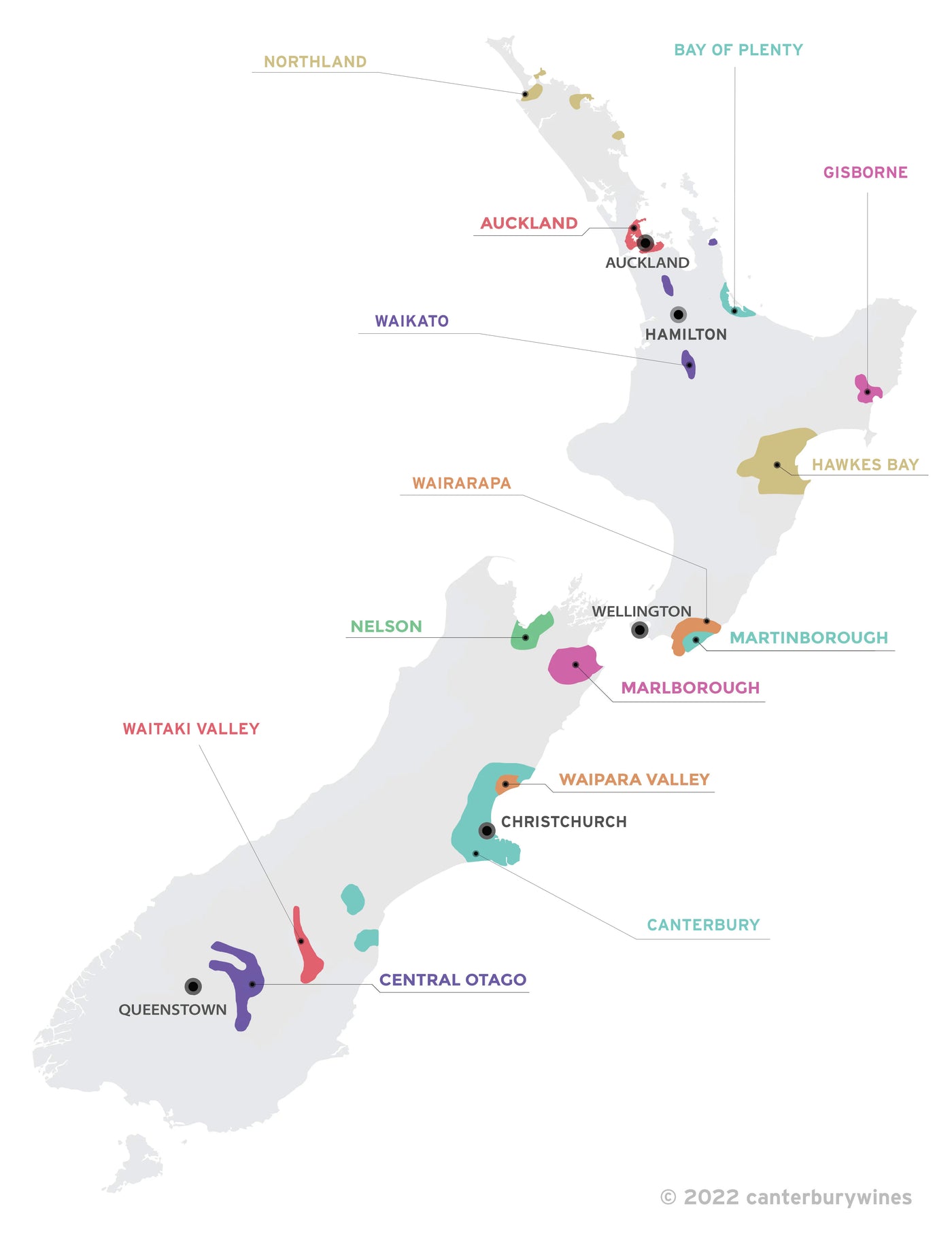

Te Mata Estate Awatea Cabernet Merlot 2021
Style: Red Wine
Closure: Cork
Te Mata Estate Awatea Cabernet Merlot 2021
Warehouse
34 Redland Drive
Vermont VIC 3133
Australia
Critic Score: 97 and ★★★★★
Alcohol: 13.5%
Size: 750 ml
Drink by: 2040
Te Mata Estate was established in 1896, specialising in high-quality wines of classical style. The winery remains family owned, producing internationally recognized wines exclusively from its Hawke's Bay vineyards. Te Mata produce two classic blends of cabernet sauvignon, merlot and cabernet franc; Coleraine which is regarded by many as New Zealand's finest red wine and its younger brother Awatea.
"The 2021 Awatea Cabernets-Merlot is a thrilling wine and a worthy entree to the Coleraine—one of the Southern Hemisphere's best Cabernet blends. You get red fruits, savory exoticism, enoki mushroom, bay leaf, black tea leaves, pastrami... It's bloody gorgeous. A sensational wine, it has detail, nuance and line, and it's very long and placid but precise." Erin Larkin
The 2021 Awatea is a blend of 50% cabernet sauvignon, 36% merlot and 14% cabernet franc.
"A deep brilliant crimson with an underlying amethyst hue, Awatea '21 immediately offers up concentrated blackcurrant, blackberry, dark plum, cocoa-powder and cedar with a subtle marine note in the background. The ripe dark and red fruit is fresh and varietally defined, enlivening the wine with layers of brightness, persistence and appeal. This depth of fruit, balanced by the bright, ripe, acid tension, carries right through to its fine dry finish. The most concentrated Awatea ever this '21 is a delight." Te Mata Estate
Te Mata Estate Winery
Expert reviews
"Offering harmony and structure within an opulent framed of rich fruit and silky tannins, this is a gratifying red offering awesome value. The enticing bouquet shows blackcurrant, mulberry, tobacco and cedary oak characters with a delicate floral overtone. The palate displays amazing depth and persistency, wonderfully complemented by delectable fruit flavours with spicy nuances. Tannins are fine, mouth-coating and just right, making it structured and seamless at the same time. At its best: 2025 to 2038." Sam Kim, Wine Orbit – 97 points
"The 2021 Awatea Cabernets-Merlot is a thrilling wine and a worthy entree to the Coleraine—one of the Southern Hemisphere's best Cabernet blends. You get red fruits, savory exoticism, enoki mushroom, bay leaf, black tea leaves, pastrami, cassis bramble, red apple skins, tobacco leaf, vanilla pod, salted heirloom tomato, blackcurrant, flowers and delicate nuances of umami in profusion, along with crushed oyster shell, tea tree and native rosemary. It's bloody gorgeous. A sensational wine, it has detail, nuance and line, and it's very long and placid but precise. The 2021 Awatea is a blend of 50% Cabernet Sauvignon, 36% Merlot and 14% Cabernet Franc that matured in barrel for 17 months, 30% new. This spent longer in barrel (by a month) than the 2020 prior. The fruit is sourced from several subregions: predominantly Havelock, Gimblett Gravels and Bridge Pa Triangle. Drink: 2023-2043." Erin Larkin, Wine Advocate - 96 points
"Positioned below its Coleraine stablemate in Te Mata's hierarchy of Hawke's Bay, claret-style reds, Awatea is grown at Havelock North and in the Bullnose Vineyard, inland from Hastings. A blend of Cabernet Sauvignon, Merlot and Cabernet Franc, it is hand-harvested and matured for 15 to 18 months in French oak barriques (partly new). Compared to Coleraine, in its youth Awatea is more seductive, more perfumed, and tastes more of sweet, ripe fruit, but it is more forward and slightly less concentrated. The wine can mature gracefully for many years, but is also typically delicious in its youth. The 2021 vintage is a blend of Cabernet Sauvignon (50%), Merlot (36%) and Cabernet Franc (14%). Dark and purple-flushed, it is mouthfilling, with deep blackcurrant, berry and spice flavours, complex and savoury, finely tuned tannins and a very harmonious finish. An elegant, rich, distinctive red, it offers great value and should be at its best 2026+." Michael Cooper ★★★★★
"50% Cabernet Sauvignon, 36% Merlot and 14% Cabernet Franc. Tasted alongside the 2020 and while they’re obviously similar, there’s more acidity and leafy perfume in the 2021. Blackcurrant, raspberry and leaf, tobacco, and spicy perfume, pencil/cedar oak. Medium-bodied, tannin sits so nicely within the wine, fresh and long, with classic fragrance in with that. So 'minerally' and cool. Very long. Precision and definition mark it out as a wine of class and fine filigreed deliciousness. It’s just so good, energetic, stony and definitely worthy of cellaring. Superb. Drink: 2025 - 2038+." Gary Walsh, The Real Review - 95+ points
"Deep-ish purple-red colour, glowing and bright; there are fresh mulberry, blackcurrant and raspberry aromas paired with a delicate sheen of barely perceptible nuttiness from oak (30% new). The wine is tautly focused, poised and long on the palate, refined and vibrant. It's just a babe and will reward cellaring big-time. Drink: 2025-2036." Huon Hooke, The Real Review - 95 points
About the winery

Te Mata Estate was established in 1896, specialising in high-quality wines of classical style. The winery remains family owned, producing internationally recognized wines exclusively from its Hawke's Bay vineyards.
"New Zealand's first growth" - Andy Howard MW, Decanter Magazine
"A national treasure" - Jancis Robinson MW
"New Zealand's greatest winery" - Robert Parker's Wine Advocate
Te Mata Estate was originally part of Te Mata Station, a large pastoral land-holding established by English immigrant, John Chambers, in 1854. After returning from France, John Chamber's third son, Bernard, had the idea to plant vineyards on the north-facing hills around Havelock North. In 1892 he planted vines on three parcels of hillside land above the homestead and began converting the original stables to ferment and mature the wines. The first vintage wines were released in 1986. Today, Te Mata Estate still uses those same three vineyards.
The Chambers family sold the property in 1919. The property had two other owners until John and Wendy Buck acquired Te Mata Estate in 1978 and instigated a twenty-year development program, which commenced with the restoration of the original winery building and the replanting of all of the original vineyards. In addition, new vineyard sites were acquired in the Bridge Pa, Gimblett Gravels and Dartmoor Valley sub-regions of Hawke's Bay (refer map below). The Buck family have been producing Te Mata wines ever since. The success of Te Mata's wines in the '80s is credited with sparking the revival of Hawke's Bay as a top wine region.

Te Mata Estate Winery and Hawke's Bay sub-regions

New Zealand
New Zealand is home to more than 700 wineries across 14 wine regions. The regions are Auckland, Bay of Plenty, Canterbury, Central Otago, Gisborne, Hawkes Bay, Marlborough, Martinborough*, Nelson, Northland, Waikato, Waipara Valley, Wairarapa and Waitaki Valley. * Martinborough is a sub-region of Wairarapa, however, as it is world renowned it is considered here to be a region to avoid confusion.
The wine regions in New Zealand stretch from latitudes 36°S (Northland) in the north (comparable in latitude to Jerez, Spain), to 45°S (Central Otago) in the south (comparable in latitude to Bordeaux, France). New Zealand's climate is maritime, producing cooler summers and milder winters than would be expected at similar latitudes in Europe.
Viticulture in New Zealand dates back to 1836 when British resident James Busby produced wine in the far north, but it wasn't until 1985 that the wine industry came of age when Cloudy Bay Sauvignon Blanc garnered international attention and critical acclaim.
New Zealand is internationally renowned for Sauvignon Blanc (particularly from Marlborough), Pinot Noir (Central Otago, Martinborough and Waipara Valley), Chardonnay, Bordeaux-style blends of mainly Merlot and Cabernet Sauvignon (Hawkes Bay) and Syrah (Hawkes Bay). Sauvignon Blanc accounts for 63% of the area of the national vineyard, followed by Pinot Noir (14%), Chardonnay (8%), Pinot Gris (7%) and Merlot (3%).

